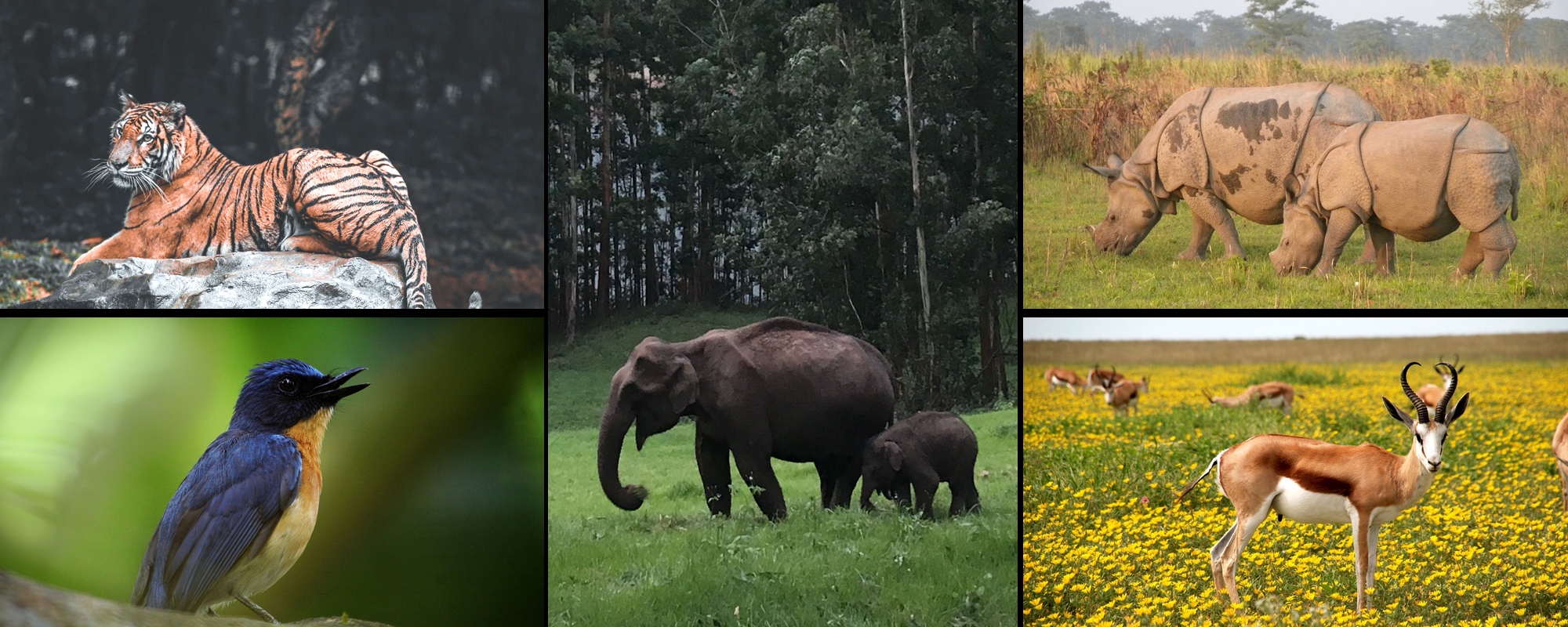
Having a varied and vibrant topography comprising dense forests, mosaic grasslands, and muddy marshes, Dudhwa National Park is home to a diverse range of wildlife populations and floral species which makes it an ideal place for nature lovers and wildlife enthusiasts. Being given the status of a Tiger Reserve in the year 1879, the area was later declared as a National Park in the year 1977 and acquired the project Tiger in 1988. Located in Uttar Pradesh in the regions of Kheri and Lakhimpur districts, Dudhwa National Park witnesses a plethora of travelers and visitors who visit the park to spend some solitude time in the lap of nature.
This region of the national park comes under the sub-Himalayan area known as the Terai belt which is considered one of the most endangered ecosystems throughout the world. The park is in the vicinity of the Indo-Nepal boundary and has the two most spectacular sanctuaries of the region namely, Katerniaghat and Kishanpur Wildlife Sanctuaries to personify the stunning greenery and forest area across the Terai region. Dudhwa National Park is spread in an area of 490 square kilometers and is composed of a vast alluvial plain along the tributaries of Mahana and Suheli, interspersed with numerous rivulets, lakes, and pools.
The park inhabits more than 38 species of mammals, 90 species of fish, 400 species of birds, and 16 species of reptiles. The highlights of the park are the Swamp Deer (Barasingha) and Tigers which can be spotted on a jungle safari. The water tributaries inside the park provide freshwater for the reserve throughout the year and offer support to the wildlife and aquatic life. the park is popular among bird watchers, wildlife paramours, photographers, and even leisure travelers.
Sal, Semal, Khair, Siras, Haldu, Tun, Teak, Sisam, Eucalyptus, Silvery Munj, Red Retwa, Narkul, Cotton like Kans, etc.
Mammals:Tiger, Rhinoceros, Swamp Deer, Elephant, Hog Deer, Civet, Cheetal, Wild Pig, Rhesus Monkey, Langur, Sloth Bear, Blue Bull, Porcupine, Sambar, Jackal, Barking Deer, Leopard Cat, Fishing Cat, etc.
Reptiles: Turtles, Python, Monitor Lizard, Mugger, Gharial, etc.
Birds: Hornbill, Red Jungle Fowl, Peafowl, Black-Necked Stork, White-Necked Stork, Black Stork, White Stork, Fishing Eagle, Bengal Florican, Serpent Eagle, Osprey, Great Horned Owl, the Forest Eagle Owl, the Brown Fish Owl, the Tawny Fish Owl, the Dusky Horned Owl, Paradise Flycatcher, Woodpecker, Shama, Indian Pitta, Bengal Florican, Orioles, Emerald Dove, etc.
Dudhwa National Park experiences an extreme humid subtropical with dry winters type of climate. Summers are scorching hot with temperature rising up to 40 degrees Celsius while the winters start from mid-October to February with temperature hovering between 20 and 30 degrees Celsius.
The best time to visit the national park is between the months of November to Maywhen the weather is pleasant to explore the jungles and not too hot to be uncomfortable. Though the month of May can be a bit hotter than the other months, wildlife can be spotted easily during this time as the animals come out of their natural habitat in search of water.
Nearest Train Station: The nearest railhead is Dudhwa Railway Station, about 4km from the national park. The railway station is well-connected by road and taxis and buses are available from the station to the park.
Nearest Airport: The nearest airport is Lucknow airport at a distance of 220km from the park. The airport is well-connected by road and local transportation is available to take you to the national park.
Road Accessibility : The national park is approachable by road as well and is connected to all the major cities and places near Uttar Pradesh. You can either take a government or privately operated vehicle to reach the park.
Copyright 2012-2022 Indiamap Digital Pvt Ltd. All rights reserved. Privacy Policy | Terms of Use